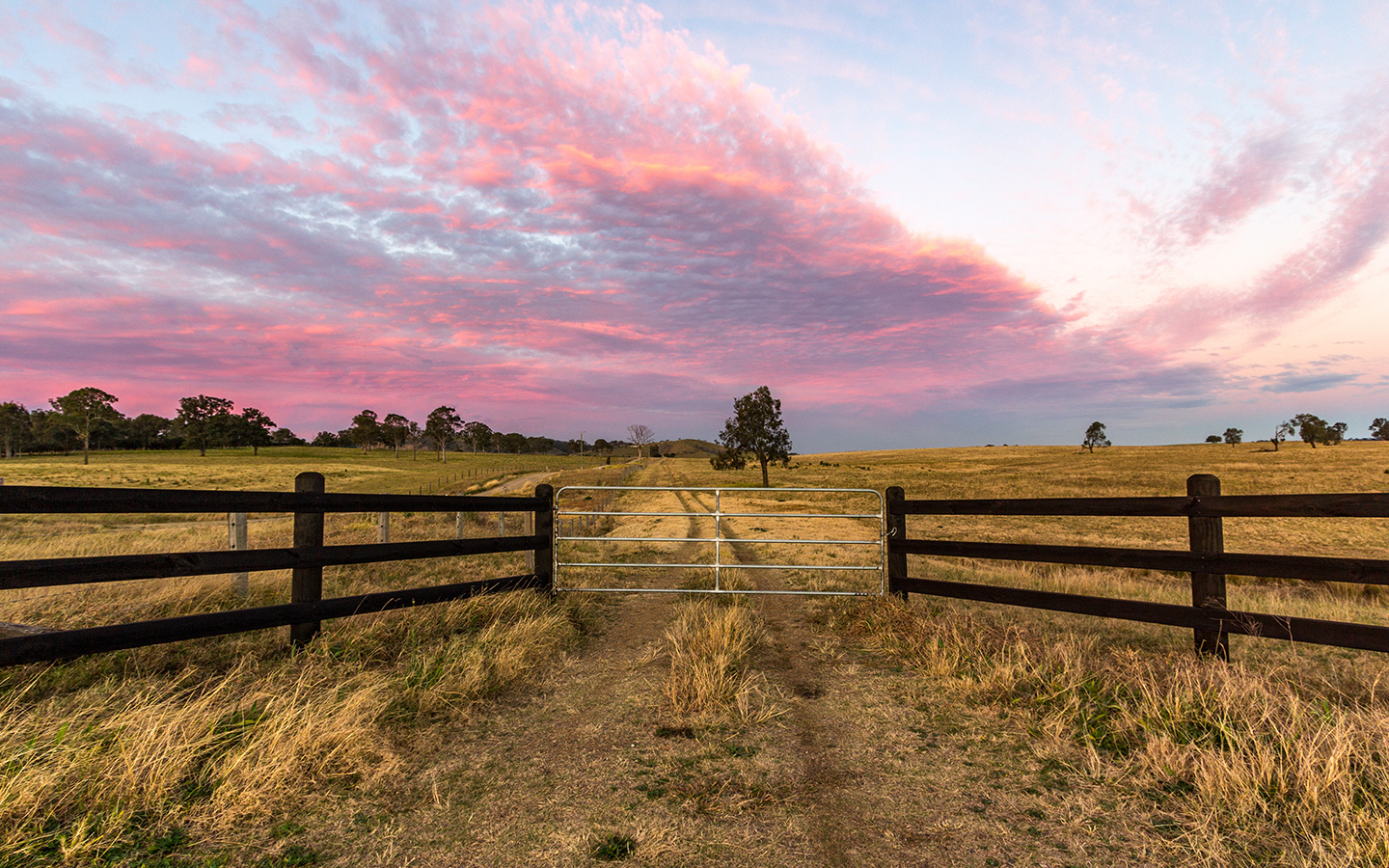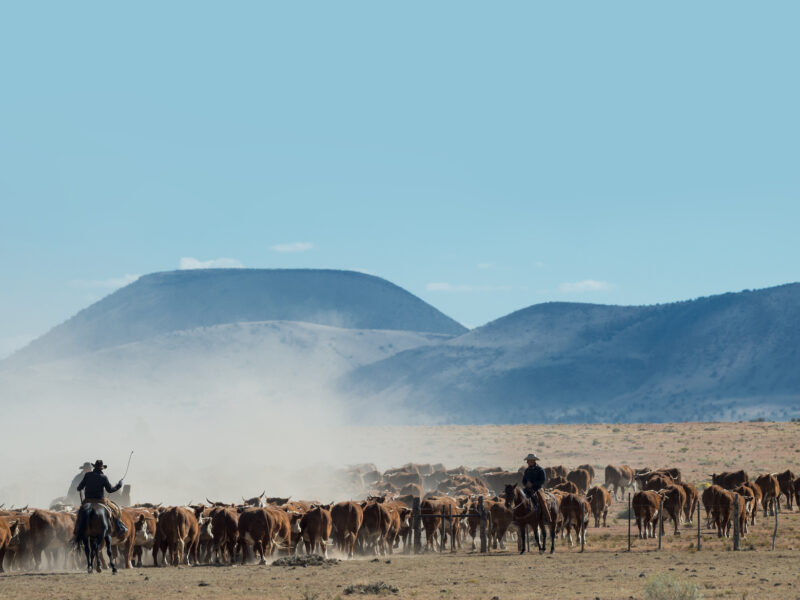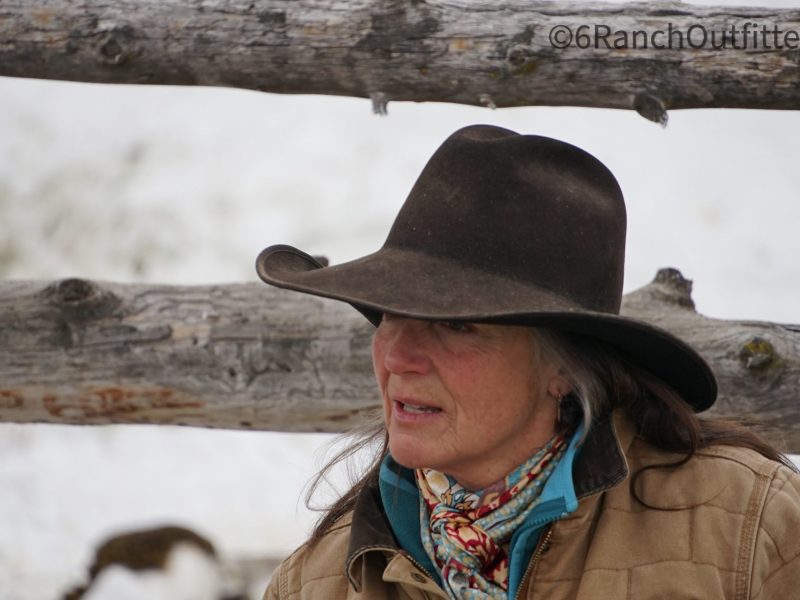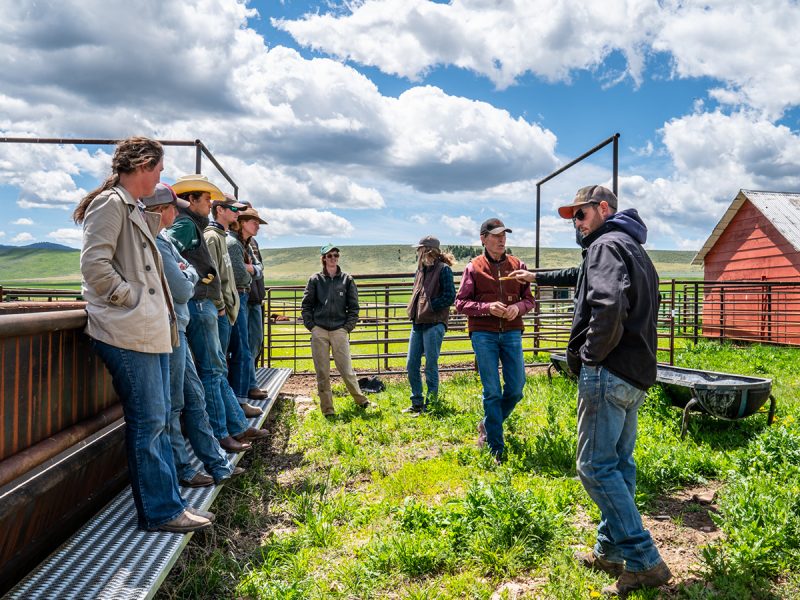Succession Planning Q&A Part 5: Best Practices of Non-Resident Landowners
This is the fifth in a series of question and answer sessions focused on succession planning between Western Landowners Alliance and Howard Weiss of Bank of America’s Private Bank.
In our prior four conversations, we focused on the critical topic of succession planning. We covered the subject from a range of viewpoints including management succession, family governance structures, legal entities, wealth transfer and trusts. We considered each of these issues from the standpoint of the landowner. This fifth and concluding part in the series deals with the non-resident owner or what some call the “outside” rancher or “absentee” landowner. Some observers believe that the non-resident owner has become the dominant buyer in recent years, so it is appropriate to consider some of the issues this owner faces. We are interested to hear about strategies and best practices of this type of owner.
Owning and operating a ranch is not the easiest financial investment. How does a non-resident owner arrive at their initial decision to purchase a western ranch? What are their main motivations?
For some, it has been a life-long dream to own a piece of the “Old West” and become the rancher they visualized in the old western films. As such, it is considered a “psychic investment” of sorts. Others, who made their wealth elsewhere, look at a ranch for its recreational benefits, particularly fishing and hunting. As such, it can become a retreat where the family can gather each summer and where the owner can entertain friends, business colleagues and clients. Still others will take a more business approach but, where this is the case, many tend to separate the ranching operations from the land values. Some will be content to manage a break-even operation and let the land appreciation become their source of investment return. If this strategy plays out, a ranch can be a good diversifier to their overall portfolio.
When a non-resident decides to explore a western ranch purchase, what are some of the common practices you have observed? We would be interested in how they may decide on a particular state and then a general location.
As you imply, location is critical when buying a ranch just as it is in buying any other property. However, location is a bit more involved when buying a ranch far from home. Here are several elements of this decision process:
- Road Access. There is a lot involved here for someone whose main home is far away. Non-resident owners usually worry whether there are good main roads to get one to the property and whether these roads will generally be open year-round. Another aspect is how the land is positioned in relation to a mountain range. Land in the mountains certainly offers great views and is closer to the snow caps and water source. By contrast, lands in the foothills or front ranges offer longer spring, summer and fall seasons, but are further from water, so water rights become critically important.
- Town Nearby. While many enjoy the wide-open space, most non-residents, particularly from the East, prefer to live within a reasonable drive to a full-service town for shopping, supplies and some good restaurants.
- Hospitals and Medical. Particularly for older buyers, travel times to health care facilities can be an important factor.
- Transportation. An obvious consideration is access to an airport and the distance from the airport to the property. Some will take private jets while most fly commercially, but in either case buyers take into consideration the door-to-door travel time from their primary residence.
- Communications. Many buyers expect, or have careers that require, high-speed internet, cell phone service, and other aspects of reliable communications technology, expectations that would have seemed outrageous a generation ago.
- Human Resources. Non-residents will need local resources to operate their property. This includes everything from ranch managers and general hands to specialized construction trades. Some may want to engage a year-round resident property manager.
Once a prospective buyer zeroes in at a general location, what are the common next steps or best practices you have observed to close a purchase?
The best practices for a non-residents are really no different from a resident owner but certain aspects may be more important for them, particularly if their objectives go beyond raising cattle, horses or other livestock. Here are some of the common issues considered:
- Water Rights. This is at the top of the list and causes the most angst for non-resident owners. Non-residents are not always as knowledgeable about the subject and expend a lot of effort to understand the water sources and how water ultimately gets to their property. Then, they need to understand the extent to which the water can be used by the landowner. For example, one of my clients explained when I visited his ranch, that the stream running through his property is not entirely for his use. He can only consume a certain amount of it. Water also impacts recreation use.
- Wildlife Habitat. Property rich in wildlife augments the value of one’s property, so non-residents usually need guidance in maintaining healthy wildlife habitat.
- State and Local Recreational Licenses. Hunting and fishing are often key activities for non-residents. So, the regulations surrounding hunting and fishing licenses, including landowner hunting tags, are key issues considered.
- Mineral Rights. Non-residents usually understand that mineral rights can be owned separately from surface rights, so this aspect weighs into a decision on the purchase of a particular property.
- Livestock and Agricultural Capacity. Non-residents who intend to maintain an active ranch operation will weigh this aspect more importantly. Also, some will look at the ability to grow hay and other crops on the land.
- Access Easements. Non-resident buyers are keenly aware of easements on their land as well as if there is a need to cross a neighbor’s land to get to their property.
- Federal Lands. Proximity to federal lands is an attractive feature for ranchers with a significant grazing operation. Some of my clients have been able to secure grazing rights on public lands along with the private property they purchase. The promise of protected open space nearby also makes this proximity valuable to non-agricultural buyers.
- Conservation Easements. The opportunity to pursue a conservation easement can significantly improve a property’s appeal for the non-resident buyer. Aside from augmenting the value of their land, landowners can take advantage of income tax breaks and conservation easements indirectly help with overall estate planning objectives should a landowner wish to retain the property for several generations. Managing conservation easements is technical, so it’s especially important for non-residents to engage experts to help navigate the legal, tax, ecological and general management components when considering a conservation easement. Purchasing a property already protected under easement of course also comes with its own advantages and limitations.
Once they purchase the ranch, how do some of your non-resident clients then manage the enterprise?
- Family. Sometimes the non-resident owner is lucky enough to have a son or daughter or other family member who wants to live on and manage the ranch. One of our clients enjoys having a son and his family as full-time resident managers of the property.
- A ranch manager. Where there is not a family member available to manage the property, one can hire a ranch manager who is responsible for handling most if not all aspects of ranch operations. In this case, owners will likely establish annual operating budgets as well as capital expenditure allowances. One challenge with this scenario is what happens if the ranch manager quits, retires or becomes disabled.
- A ranch management firm. Another option is to hire a ranch management firm who can perform a wide range of functions.
- Hybrid model and additional staffing. I have also seen some hybrid situations, where an owner would have a younger, less experienced ranch manager who is supported by either a management company or an independent ranch consultant to assist with the more complex management and financial tasks. I might comment further about overall staffing. In addition to several ranch hands, larger operations with multiple locations may also have a foreman or herdsman living on one of the properties. If the owner spends several months per year on the ranch, he or she may also have a resident property manager (sometimes a couple) who oversees their home and grounds.
“Where there is not a family member available to manage the property, one can hire a ranch manager who is responsible for handling most if not all aspects of ranch operations. In this case, owners will likely establish annual operating budgets as well as capital expenditure allowances. One challenge with this scenario is what happens if the ranch manager quits, retires or becomes disabled.”
You alluded to the challenge of losing the ranch manager. What practices have you observed in planning for and then handling this risk?
This is an operating challenge that is more acute for the non-resident owner compared to the resident owner who lives on the ranch year-round and is engaged with some aspects of the operation even if they do not necessarily run the entire ranch. This issue has several facets to it.
- First, the owner usually has a relationship with a management company that can step in for at least a limited time period should the ranch manager abruptly leave. Their role could be to run the entire operation or to support the second in command who might be the foreman or herdsman.
- A second consideration is when the manager is aging and is preparing to retire. Over the years, I have seen that even though one has a fair amount of time to prepare, the transition to a new manager can be challenging. The most successful management transitions are where the incumbent is willing to train a younger successor or where he is graciously willing to break in and transition an externally hired manager. Sometimes, the owner may offer financial incentives to an out-going manager to accomplish a successful transition. Retirement plans along with a separation bonus are sometimes employed in these situations.
- Still another scenario is when a foreman or herdsman is promoted to manager. If the owner does not believe that the person is completely ready to assume full leadership, the owner may engage a ranch management firm or consultant to temporarily support the new manager.
Let’s now look at the other aspect of succession for non-resident owners, passing ownership to the next generation. We covered many of these issues in earlier conversations, but could you modify our discussion to incorporate some specific issues non-residents face? Also, what legal ownership structures are frequently employed by non-residents?
I will answer the part about legal ownership structures first. The most common structure nowadays seems to be the limited liability company (LLC). The principal reason is its limited liability, of course, but it is also a flexible structure for management, gifting and later wealth transfer. From a management standpoint, an individual can be appointed as the managing member while any other owners are limited partners or members. From a gifting and wealth transfer standpoint, the units can be easily divided and because of their lack of immediate liquidity and marketability, one can transfer them at a discounted value. However, one needs to be aware of the need to arrive at a valuation when gifting or transferring units among family members. Doing so at a discount will gain the attention of the IRS, so it is important to correctly value the ranch enterprise and defend the discount taken. Another advantage of an LLC is that the operating agreement can restrict ownership if that is what you want to do. Having said all of this, the important advisors are one’s estate planning attorney and CPA and one should engage them upfront to make sure of the right structure as well as how one is executing any intra-family transactions.
The main part of the question is much more involved. Before starting to deal with ownership succession, a family has to address the overarching question of how long they as a unit wish to hold the property. Will a surviving spouse keep the ranch if the spouse who spearheaded the purchase predeceases him or her? Are the next generation heirs interested in maintaining the ranch, and more importantly, is anyone interested in managing or residing on it for a good part of the year? Will their children be interested in having a ranch in the family? These can be difficult questions, but one should have at least an outline of future succession at the time they purchase the property.
Let’s look at a few scenarios. First, assume a surviving spouse wishes to retain the property while they are alive so as to continue using the ranch as a family gathering point. How would someone structure that?
One option initially is to place the ranch ownership within a revocable living trust. This enables the property to be transferred at death without going through probate. If specified, the trust could then become irrevocable upon the death of the grantor. If the trust is considered to be part of the marital property, it will not be subject to estate tax since transfers between spouses are free of transfer taxes. There should also be a step-up in basis on the property value held by the deceased spouse. However, when the surviving spouse passes away, the ranch, if still held, would be included in the survivor’s taxable estate. Also, at the survivor’s passing, one will have the issue of what then happens to the ranch. Should the ranch be held within a trust, one needs to make sure there is also adequate liquidity to cover any net cash flow as well as to have adequate funds for any needed capital improvements.
There are some additional wrinkles including the issues surrounding second marriages, philanthropy and conservation easements to consider.
- As for second marriages, one will have to deal with the ultimate transfer of the ranch to his or her children from a previous marriage, if one wishes to enable the surviving spouse to live on the ranch. Here is where there will need to be appropriate language in the trust document as well competent estate planning counsel.
- Philanthropy can also come into play for those who may be willing to give the ranch to a charity at some point. In this case, one can structure one’s estate whereby the surviving spouse can enjoy a life interest in the ranch with the remainder interest going to a charity. The life interest would qualify for the marital deduction and avoid estate taxes while the remainder interest would receive a charitable deduction and not be taxed in the survivor’s estate.
- As for conservation easements, many non-resident owners look at these within their overall land management plan, as well as estate planning. If they wish to maintain the property for several generations, they may view conservation easements as a way to reduce overall valuations when transferring the ownership to the next generations. Once again, this is a complex issue so one should obtain qualified advisors in this area.
“Before starting to deal with ownership succession, a family has to address the overarching question of how long they as a unit wish to hold the property.”
Moving to the next scenario, how do families handle the situation where one of their children wishes to live on and operate the ranch? In particular, how does that impact how they deal with the other children?
This is both positive as well as challenging. It is positive that a family member is willing to stay on and manage the ranch, thus keeping it in the family. With a non-resident owner, one may not have the further problem of competing interests between children since on average, children who did not grow up on the ranch may not have the same attraction to the land as those who did. Moreover, non-resident family members may not care as much about having an ownership interest. However, they would still expect some equalization within their parent’s estates should one of their siblings wish to operate the ranch. I realize this may be an overgeneralization. Nevertheless, in this instance, the parents would have two options for transferring the ranch to one of their children.
- The first option is to gift the ranch to their child either at one time or over years by using their annual gift exclusion, which is $15,000 per year today. Spouses can combine gifts and can also use some of their lifetime estate tax exemption which is currently over $11 million. The parents can then use other assets to equalize their estate among their other children.
- A second option is to have the child purchase the ranch either during one’s lifetime or from one’s estate, under some type of buy/sell agreement. Of course, one would need a process for arriving at a valuation along with such terms as interest rate and maturity of the note. In addition, a child could fund the buyout with life insurance.
Moving on to another scenario, what about the situation where nobody in the next generation wants to operate the ranch, but all wish to retain it as a family gathering space? What is a common practice you have observed by non-residents in this case?
One observed practice is forming the ranch within an LLC and then selling it to a family dynasty trust. As described in a previous article, the actual transaction could be a sale to an intentionally defective grantor trust. By definition, the grantor would be responsible for paying income taxes on the trust, but the assets within it, would not be part of their estate. The parents would sell their ranch LLC units to the trust but at a discounted value for tax reporting purposes. The parents would hold a note and receive payments under the note. Any appreciation beyond the transaction value would accrue to the trust. The children would be beneficiaries of the trust and the trust would provide asset protection to them. The note, however, is now part of the parent’s estate. I might also mention that placing the majority of ranch LLC units in a trust will provide for more efficient governance than by having the units dispersed among many family members, particularly in the case of non-resident owners. The key decisions rest with the trustees.
How do non-resident owners govern the operations of a ranch? It would seem that governance would become more complex as more generations become owners.
For many non-resident owners, it will depend on the scope of their family enterprise activities. Most wealthy outsiders will have some form of family office or business enterprise. In such cases, the family office generally oversees the activities of the ranch, especially from a budgeting and financial management standpoint. They will also arrange for an annual audit of the books. In other cases where there may not be a formal family office, the family may establish a formal oversight board to decide key initiatives and issues. Such a board would include not only the family’s traditional advisors back home, but also local legal and ranch management experts.
In conclusion, how would you summarize the key aspects of how non-resident owners approach the purchase and management of a western ranch?
Non-resident best practices begin with understanding their near and long-term objectives for how they wish to use the property. If they intend to actively operate the ranch, they will have clear expectations for how it will perform. Others will value the recreational components. Another best practice is understanding the critical aspects of location for the right property and covering all of the factors impacting one’s use of the land. Then, one should have an ownership succession plan at least outlined when purchasing the ranch. A plan for how to manage the ranch is also essential. In addition to a skilled real estate agent, one should assemble a trusted team of advisors for ranch operations, taxes and wealth transfer.
Before concluding, I will note that non-resident buyers now need to consider the prospect of a new tax regime which would very likely impact affluent landowners. It is still a little early in the Biden administration to predict what tax law changes will actually get enacted by a Congress with very slim majorities in both the Senate and House. However, there are two potential challenges that landowners could face should some of Biden’s stated tax policies get passed into law. The first is a reduction in the lifetime gift and estate tax exemption, which currently stands at $11.7 million per person or $22.4 million per married couple. There are various opinions as to how much this could be reduced. However, the 2017 tax law sunsets in 2026 and if Congress takes no further action, the exemption would fall to previous levels with an inflation adjustment. This would be approximately $6.5 million per person. The other more onerous issue for properties with a lower tax basis is the potential elimination of the step-up-in basis on inherited properties. This especially impacts those families that may currently fall under the exemption limits. At this time, it is uncertain how such a feature would be implemented. There could be a capital gains tax imposed at death or the inheritor could be required to assume the original cost basis of the transferred property. While predicting federal policy, especially recently, is difficult, it is not a bad idea for ranch owners, both full-time residents as well as non-residents, to consult with their tax advisors regularly as events unfold.
Howard M. Weiss is Senior Vice President and Family Office Strategist, Philanthropic and Family Office Group, Bank of America Private Bank. You can reach Hooward via email at howard.weiss@bankofamerica.com or on his office phone (239) 254-3289.
- Part 1: Securing your legacy on the land
- Part 2: Family governance
- Part 3: Alternate ownership structures
- Part 4: Transferring property
If you have additional questions around succession planning that you would like to see answered in our fifth and final session, please contact Hallie Mahowald: Hallie@westernlandowners.org.





